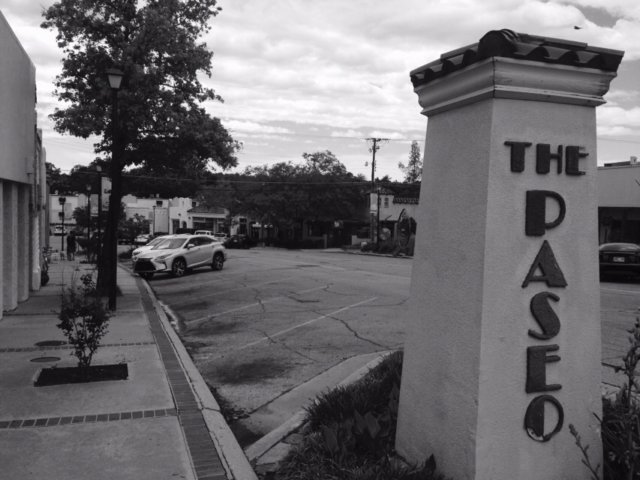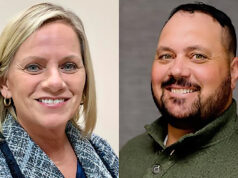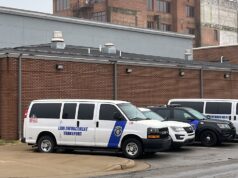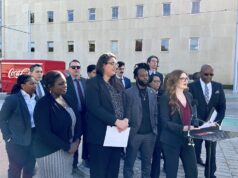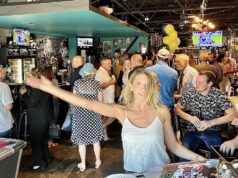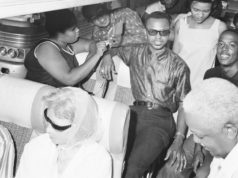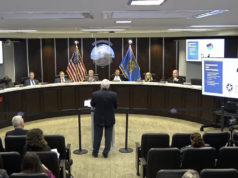
In 1983, my wife, Jocelyn, and I bought a small house nearby The Paseo. A year earlier, the collapse of Penn Square Bank had wiped out industrial jobs in central Oklahoma City. In the ensuing fallout from the Reagan administration’s supply-side economics, home repairs ceased in the neighborhood. Shade trees lost to the Dutch elm disease went unreplaced. Owing to white flight, the population of the Oklahoma City Public Schools system dropped from nearly 75,000 to 40,000. Voters stopped passing annual bond issues for maintaining schools, parks and other infrastructure.
A generation after our home purchase, the neighborhood looked like a scene from The Day the Earth Stood Still. In this economically depressed climate, the Hoova set of the Crips gang set up drug houses in abandoned homes on virtually every street. Still, our interactions with the children left behind in the wake of rampant drug activity and violence changed our lives for the better.
Interactions at the workplace
During the 1980s crack-and-gang era, Jocelyn worked for a small architectural firm in The Paseo. Gang activity was even greater there, six blocks away from our house in Central Park. Her office was like an outpost of the 21st century surrounded by the Third World. Jocelyn and John Robison, the business owner, could do nothing for men with master’s degrees coming to their door looking for minimum wage jobs.
They could, however, take kids under their wings. Joc’ and John would put little kids on their laps and demonstrate the wonders of computer-aided design on their desktops. They could also take the kids sailing and offer the parents what little employment they could afford.
Drug dealer: ‘Life is so hard’
Jocelyn and I were in the process of removing our front and back lawns, replacing them with gardens and a pond. Every time we ventured outside, we gained a new gardening buddy among the neighborhood children.
When digging the pond, some younger kids would ask for sidewalk chalk. Afterward — and this was completely without prompting — my young neighbors demonstrated their “two fers” (a colloquial term for multiplication tables), then would do some more chalk work, then go back to showing off their “two fers” math skills.
The most memorable of those neighborhood interactions, which I kept secret from Joc’, occurred at 1 a.m. Our dog, Loki, and I had confronted a drug-house proprietor who was chasing a mom and her children down Shartel Avenue. As the kids huddled behind Loki, the dealer threw his broomstick away. I stayed with the assailant until the family had safely departed. The dealer eventually broke down, crying uncontrollably. “Life is so hard,” he said through tears.
After making sure the man had left the area, I circled back to the crack house. I was invited in, ostensibly to make sure the aggressor did not return, but mostly because the family wanted to talk to someone. Every time I found myself in such a situation, I felt amazement at how different the world looked from inside a drug house.
Mentoring ‘Martin’
It was usual for an entire family to wake us at 1 or 2 in the morning, usually fleeing an abusive father or boyfriend. Several times it was Martin’s (a pseudonym to protect his identity) terrified family. In those cases, I typically stood back 20 feet or so and let the oldest son (or, at least, the oldest son who wasn’t incarcerated) deal with his drunken father. Just having an adult witness was crucial, and abusive males were reluctant to have law enforcement involved. Occasionally, the police were called. In those cases, I bolstered my street cred by helping to referee the crisis. I felt for Jocelyn, though, because she didn’t sign up for the job of full-time neighbor in the ‘hood.
Jocelyn soon became Martin’s preferred mentor, however. At the time, he was angry with me for busting him while running from the police after a car theft, but he helped Jocelyn lay a brick driveway and path. Sometimes it was frustrating that Martin would refuse to speak to me as he came over to ask my wife for a ride. Eventually, Martin forgave me, and I also became his chauffeur. Finally, I was restored as his confidant.
My sense was that Martin gave out under the stress of being the closest thing to an adult in his family, and that is one reason why he shot at the police while fleeing a felony. That constituted his “escape from freedom” and earned him a 30-year sentence, where the system would run his life for him.
Interactions in the garden
Several of us were community gardeners, and we mentored at-risk children in the neighborhood. We knew that our efforts would be more effective if more black men joined to help teach these skills to black teens. Relative to women and children, the population of black men in the households of our at-risk friends was small, but a good percentage of male role models volunteered.
The physical labor we gardeners enjoyed was continually but good-naturedly dismissed by young people as “white peoples’ work.” One day at Northwest 30th Street and Walker Avenue, we fouled everything up trying to move a several hundred-pound stone. Of course, our teen-aged helpers were ribbing us mercilessly. All of a sudden, a truck backed up, and an elderly, short, stocky black man took charge. He studied the angles, diagnosed the problems with leverage, assigned us roles and barked orders when we messed up. In no time, the newcomer guided the stones into place. Afterward, the teens joked that our rescuer had been “whiter than you are,” but their sense of pride was palpable.
White guy with a big knife stalks basketball court
Those sorts of dramas, with everyone bringing their own perspectives, were common. One day, I was the only white person on the Memorial Park basketball court, enjoying the way 20-something year-old black men were coaching teenagers. Suddenly, a white guy with a big knife in his back pocket walked back and forth across the court, obviously high and dangerous. My older teammates asked whether he was my friend, and I told them no. (These days, I would respond with a joke about racial profiling, but during those tense times I was more circumspect.) I then loved listening to the questions of the teens about how such a situation should be handled and to the mentors’ wise answers.
Another cultural difference produced grins when I was chopping firewood. Teenage drug couriers on a “mission” saw me swing an ax, and their eyes grew big. They asked what I was doing. One contemplated my answer and replied, “You be careful, sir. That could be dangerous.”
A different approach
My wife and I took pleasure in being an oasis of safety among otherwise stormy waters. Just to the south of us, however, residents adopted a different approach to the rise of gangs. Some became deputized, strapped on handguns and instituted civilian crime patrols.
An example of that tack occurred one night when my wife and I awoke to a house full of smoke. Outside, we saw the entire neighborhood was engulfed in fumes, and everyone thought it was their house that was aflame. As it turned out, a vigilante had burned a crack house at Northwest 32nd Street and Shartel. A dozen women and children barely escaped.
Life-changing encounters
Encounters like those recanted above changed my life. They prompted me to become a teacher, opening up a new realm of discussions. That is the key value that the Paseo District and near-central Oklahoma City should promote: intergenerational and cross-cultural conversations in our now-safer world.









